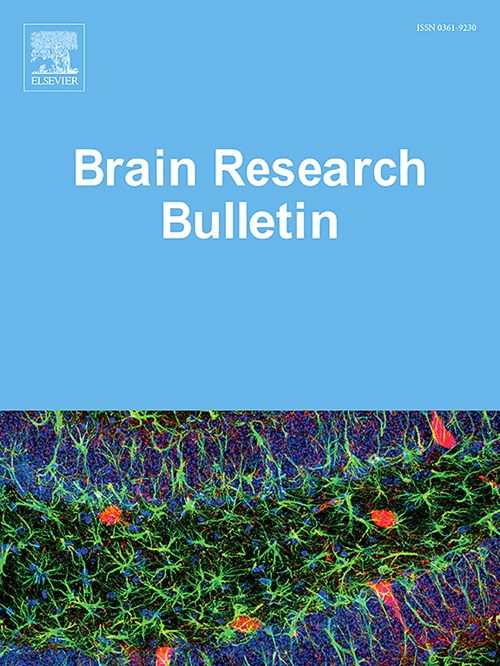Left-right confusion in psychiatric, neurodevelopmental and neurological disorders: A systematic review
IF 3.5
3区 医学
Q2 NEUROSCIENCES
引用次数: 0
Abstract
Left-right confusion is common in healthy individuals, but increased prevalence has been reported in several psychiatric, neurodevelopmental, and neurological disorders. The present systematic review aimed to identify disorders in which the prevalence of left-right confusion is higher than in the general population. For this purpose, a systematic review following PRISMA guidelines was conducted using the databases Google Scholar, PubMed, and Mendeley. A total of 20 quantitative case-control studies were included. Lesions in parietal brain areas and damage to temporal-parietal-occipital brain areas because of Alzheimer's disease were associated with severe impairments in left-right orientation. Furthermore, evidence for developmental impairments in direction assignment was provided by studies on developmental topographical disorientation (DTD). These DTD-related impairments are associated with low functional connectivity between the hippocampus and the right prefrontal cortex. Individuals with DTD show significantly poorer performance in direction discrimination compared to healthy subjects. In addition, the review highlights that, despite previous research, there remains a substantial need for further studies and for the development of a uniform definition and operationalization of left-right confusion in clinical populations.
精神、神经发育和神经障碍的左右混淆:系统回顾
左右混淆在健康个体中很常见,但据报道,在一些精神、神经发育和神经疾病中患病率增加。目前的系统评价旨在确定疾病的患病率左右混淆是高于一般人群。为此,使用谷歌Scholar、PubMed和Mendeley数据库,按照PRISMA指南进行了系统评价。共纳入20项定量病例对照研究。阿尔茨海默病引起的顶叶脑区病变和颞-顶叶-枕叶脑区损伤与左右方向严重损伤相关。此外,发展性地形定向障碍(developmental topological disorientation, DTD)的研究也提供了方向分配障碍的证据。这些与dtd相关的损伤与海马体和右前额叶皮层之间的低功能连通性有关。与健康受试者相比,患有DTD的个体在方向识别方面的表现明显较差。此外,该综述强调,尽管已有研究,但仍需要进一步研究,并在临床人群中制定统一的左右混淆定义和操作化。
本文章由计算机程序翻译,如有差异,请以英文原文为准。
求助全文
约1分钟内获得全文
求助全文
来源期刊

Brain Research Bulletin
医学-神经科学
CiteScore
6.90
自引率
2.60%
发文量
253
审稿时长
67 days
期刊介绍:
The Brain Research Bulletin (BRB) aims to publish novel work that advances our knowledge of molecular and cellular mechanisms that underlie neural network properties associated with behavior, cognition and other brain functions during neurodevelopment and in the adult. Although clinical research is out of the Journal''s scope, the BRB also aims to publish translation research that provides insight into biological mechanisms and processes associated with neurodegeneration mechanisms, neurological diseases and neuropsychiatric disorders. The Journal is especially interested in research using novel methodologies, such as optogenetics, multielectrode array recordings and life imaging in wild-type and genetically-modified animal models, with the goal to advance our understanding of how neurons, glia and networks function in vivo.
 求助内容:
求助内容: 应助结果提醒方式:
应助结果提醒方式:


